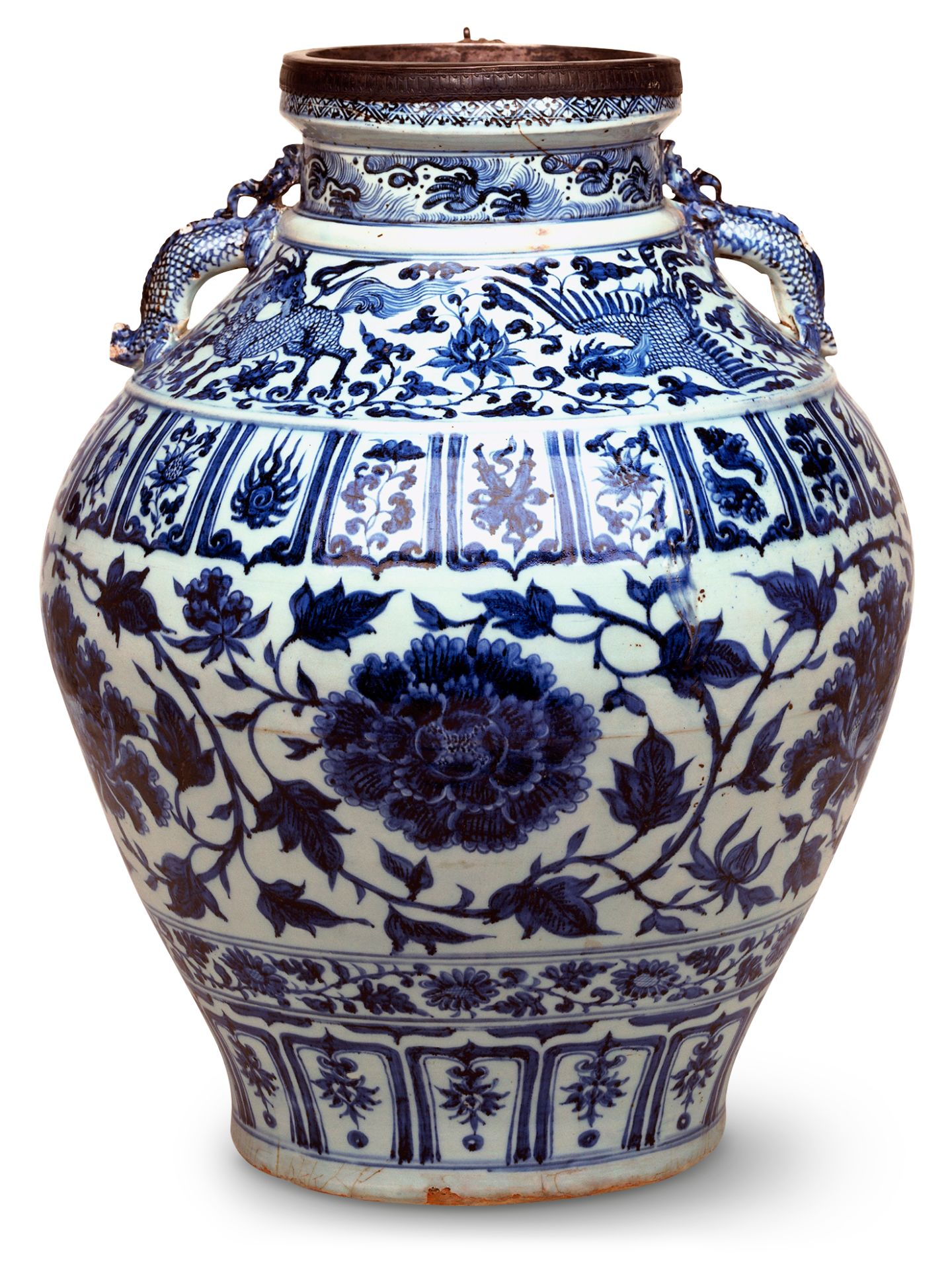For this week’s class, we discussed porcelain and ceramics, as well as our writing workshop for our research papers. The pieces we viewed were very intriguing, and the techniques/processes used in order to create intricate and geometric designs were impressive. I liked seeing how Chinese porcelain continued the tradition of dragon imagery and symbolism– and seeing how society values certain objects and symbols (this case the dragon) in the domestic products they create and are not limited to just painting and literature. The last piece which we covered, (late 19th century Phoenix in Flight, with perhaps Middle Eastern design inspirations) was particularly of interest. Towards the base of the piece, there is a banding encircling the vase, which is consistent with geometric patterning. It brings to mind Islamic calligraphy art, or girih pattern (which is emulated in the vase). If the vase was truly influenced by Middle Eastern design, it would be interesting to me to see how this region interacted with China in order for the piece to manifest. Yet such an influence is not such a far stretch, as we had seen with the Dunhuang caves that Chinese art is open to creating cosmopolitan art.
Though with the Phoenix in Flight in mind, I also wished to talk about and found interesting how Chinese ceramics and porcelain became appropriated and misused by Europeans (most notably in the Dutch design). Unlike the Phoenix in Flight vase, the vase respectfully includes its Middle Eastern influence. It does not misuse the girih patterning and does not do it an “injustice.” Meanwhile, in the Dutch ceramic of the dragon, the dragon is completely misrepresented. It certainly looks like a dragon… but because the Dutch do not value the symbolism of the dragon in the same way which Chinese society valued dragons, it just looks goofy. The Philadelphia Museum’s description perfectly encapsulated what ‘bothered’ me with the piece. There was none of the power and grace of the traditional Chinese dragon. It was misinterpreted as a menacing and wild being… as well as messy and not fully made. The Dutch piece has a distinct feeling of being left unfinished in a way, as it could not fully grasp the intricacy and esteem of traditional Chinese porcelain and ceramics. The Dutch piece was created in the mid-18th century, and it reestablished the long practice of imperialism and white supremacy in European history. The complete lack of understanding (whether through willful ignorance or general ignorance…) shows the carelessness of Europeans, and that an art piece such as this had the potential to be great, yet due to its lack of understanding falls flat. The stolen aesthetics, while beautiful, are soured with this aspect of European history.
In particular, regarding the conversation of white supremacy and cultural appropriation, I found a blog post about Spaniard-Chinese interactions to emphasize this point. There were many excerpts, but a prominent theme. Certain passages viewed the Spaniards as above the Chinese merchants they came into contact with would fight them, and make them yield (one example being, “As a result, the records of the Spaniards make me feel so ashamed … the captured Chinese all knelt on the deck and begged for mercy…”). Yet the Spaniards also wished to trade with the Chinese for their goods– and this shows the hypocrisy of white supremacy. It places white people as “above” non-white people, yet demands that non-white people serve in compliance with them (even though they have stripped them of equal footing).
Ho, Soleil. “The Rich, Complex History Hiding Within Chinese Plate Designs”. Thrillist, June 10, 2019.
Finlay, Robert. “The Pilgrim Art: The Culture of Porcelain in World History.” Journal of World History 9, no. 2 (1998): 141-87.
